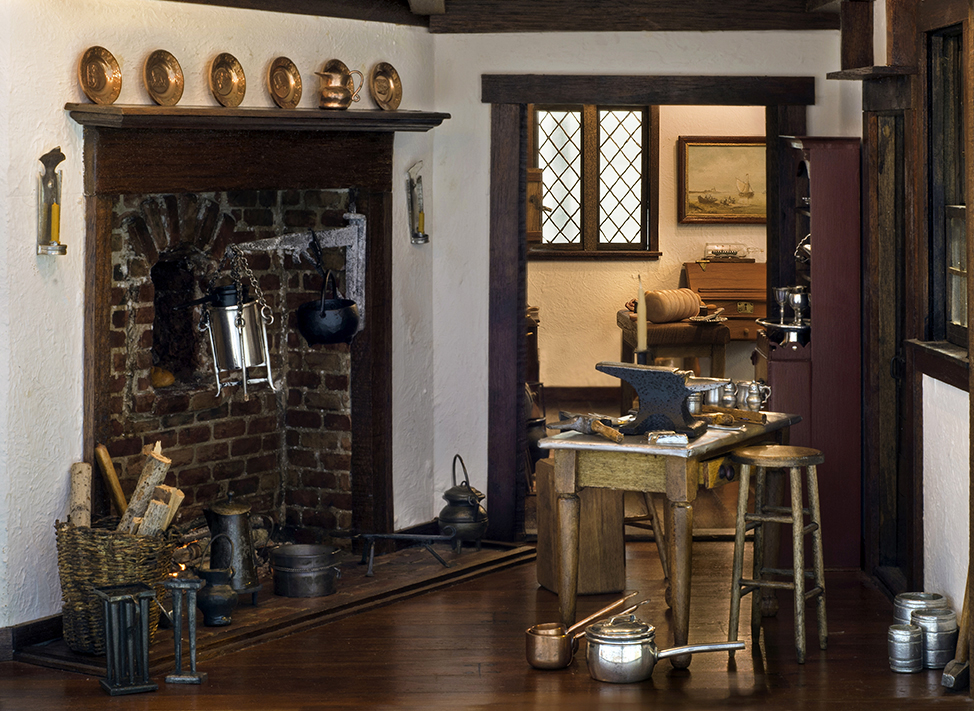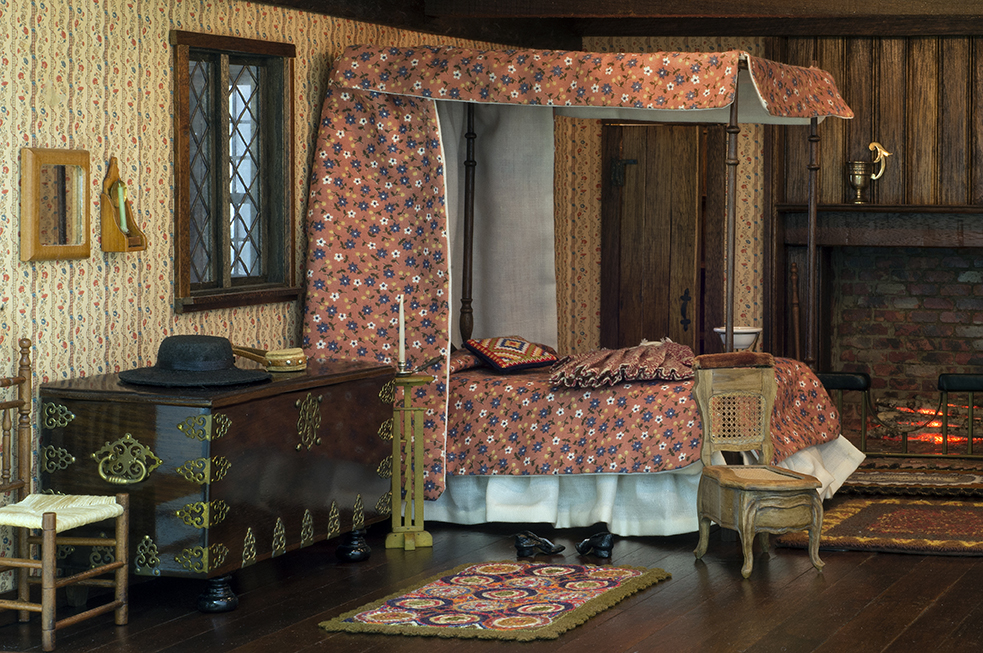
Revered: The Home of an American Icon
 American patriot Paul Revere needs no introduction. He was immortalized in Henry Wadsworth Longfellow’s 1860 poem and in history books going back as far as I remember. In Boston, Massachusetts, where he lived and worked as a silversmith when he made his famous Midnight Ride, he is considered a national treasure.
American patriot Paul Revere needs no introduction. He was immortalized in Henry Wadsworth Longfellow’s 1860 poem and in history books going back as far as I remember. In Boston, Massachusetts, where he lived and worked as a silversmith when he made his famous Midnight Ride, he is considered a national treasure.
 The Paul Revere House is one of the earliest museums of its kind in the country. Since opening in 1908, the historic home has greeted more than one million visitors. The foresight to preserve this piece of history belonged to Paul’s great-grandson, John P. Reynolds Jr., who purchased the building in 1902 to ensure that it would not be demolished. Today, it is downtown Boston’s oldest building and one of the few remaining 17th-century city dwellings in the United States.
The Paul Revere House is one of the earliest museums of its kind in the country. Since opening in 1908, the historic home has greeted more than one million visitors. The foresight to preserve this piece of history belonged to Paul’s great-grandson, John P. Reynolds Jr., who purchased the building in 1902 to ensure that it would not be demolished. Today, it is downtown Boston’s oldest building and one of the few remaining 17th-century city dwellings in the United States.
Dating to 1680, the 19 North Square address was built on the site of the former parsonage of the Second Church of Boston, which was destroyed by the Great Fire of 1676. When new, the two-story townhouse had a gabled garret and cellar and was owned by a wealthy merchant. In the mid-1700s, a third floor was added replacing the gables with a row of windows. Paul Revere owned the home from 1770 to 1800.
Throughout the next century, parts would serve as a sailor’s boarding house and immigrant tenement, with the ground floor used as shops—a candy store, cigar factory, Italian bank, and vegetable and fruit business, to name a few. The Paul Revere Memorial Association was formed at the turn of the century to renovate and preserve the building, and amazingly, ninety percent of the structure, two doors, three window frames, and portions of the flooring, foundation, inner wall material and raftering are original. The ground floor includes a typical late 18th–century kitchen and other rooms reflect furnishings from Paul Revere’s era, including several pieces that belonged to his family. The roofline was renovated in 1908, returning the structure to its original design.
This history is important to include because it represents a large part of miniaturist Pam Throop’s career. How I wish she were here to tell the story herself, but her structures are now her legacy and the Paul Revere House was one she created with extraordinary detail. She grew up in Washington D.C. and Chicago, where the Thorne Miniature Rooms made an impact on her life. Later, she worked in miniatures shops and had businesses of her own, Petite Designs and Historic Homes in Miniature.
 Pam did her PhD work in history and anthropology and used those skills to document historic architecture in 1/12 scale. She visited the original structures, meticulously measured everything, from beams to crawl spaces, and researched materials, building techniques, design trends and tools of the time, as well as the personal lives of those who occupied the spaces. With her structures came history and each piece arrived with fascinating stories. She was joy to work with and I have fond memories of the two of us staging items in The Fleece Inn. As I place my own choices now in the Revere miniature, I feel her presence validating my design decisions and thanking me for rescuing it.
Pam did her PhD work in history and anthropology and used those skills to document historic architecture in 1/12 scale. She visited the original structures, meticulously measured everything, from beams to crawl spaces, and researched materials, building techniques, design trends and tools of the time, as well as the personal lives of those who occupied the spaces. With her structures came history and each piece arrived with fascinating stories. She was joy to work with and I have fond memories of the two of us staging items in The Fleece Inn. As I place my own choices now in the Revere miniature, I feel her presence validating my design decisions and thanking me for rescuing it.
 I actually acquired the Paul Revere House after I heard it was residing in a basement of a museum in Honolulu, Hawaii. I believed this important piece needed to be displayed and persuaded them to sell it to me. I was grateful that it required very little restoration—the leaded windows needed refurbishing, but it was truly amazing that it was almost like new—a tribute to Pam’s craftsmanship.
I actually acquired the Paul Revere House after I heard it was residing in a basement of a museum in Honolulu, Hawaii. I believed this important piece needed to be displayed and persuaded them to sell it to me. I was grateful that it required very little restoration—the leaded windows needed refurbishing, but it was truly amazing that it was almost like new—a tribute to Pam’s craftsmanship.
Much of the miniature is true to the style of the original house, but I did take the liberty of setting up a room to portray Revere’s livelihood as a metalsmith. The workshop where he created silver and gold pieces and the 1787 foundry where he later crafted brass, iron and copper items, were actually off site. In my interpretation, you will see implements he may have used in his craft at the time. Throughout the home are 1/12-scale examples of teapots, silver trays, candlesticks, flatware and tableware that Revere may have created throughout his career.
 Many of the furnishings are also period-specific. A number of pieces came with the structure, but with no documentation. From looking at images of the real house, several are quite similar, such as the four-poster canopy bed dressed in tones of rust and blue, the chest on stand and the gate-leg table. I added a French daybed, which I later found out was very much in keeping with the furnishing handed down through Revere’s Huguenot ancestors, as well as a bedside porcelain chamber seat with caned back and cover by Le Chateau Interiors and a beautiful burled wood blanket chest with intricate brass fittings. All the furnishings really add to the feeling that the house was well lived-in and very comfortable for the times.
Many of the furnishings are also period-specific. A number of pieces came with the structure, but with no documentation. From looking at images of the real house, several are quite similar, such as the four-poster canopy bed dressed in tones of rust and blue, the chest on stand and the gate-leg table. I added a French daybed, which I later found out was very much in keeping with the furnishing handed down through Revere’s Huguenot ancestors, as well as a bedside porcelain chamber seat with caned back and cover by Le Chateau Interiors and a beautiful burled wood blanket chest with intricate brass fittings. All the furnishings really add to the feeling that the house was well lived-in and very comfortable for the times.
While I wish I had more information on this historic home in miniature, Pam’s daughter, Eve, did offer me the designs, drawings and plans of her mother’s completed houses for our archives. They included the Paul Revere House and five other structures of Pam’s in the collection. I am currently tracking down the museums and private collectors who own the other buildings represented so I can send them the documents. I feel strongly that they should remain with the works as a tribute to their maker.

 If you live in the Boston area, try to make a trip to one of our nation’s oldest museums. I plan to visit someday soon and I’m sure I’ll be as inspired as Pam was. I commend all the efforts that have been made to preserve this part of America’s past and hope that by displaying the Paul Revere House in miniature, we are furthering not only history in education, but the art form of miniatures.
If you live in the Boston area, try to make a trip to one of our nation’s oldest museums. I plan to visit someday soon and I’m sure I’ll be as inspired as Pam was. I commend all the efforts that have been made to preserve this part of America’s past and hope that by displaying the Paul Revere House in miniature, we are furthering not only history in education, but the art form of miniatures.
The Paul Revere House makes its debut in Scaled to Perfection; A Gallery of New Miniatures which runs until May 31st, 2019. Other structures of Pam’s which will premiere are the Davidson Shoppe in Williamsburg depicting an apothecary in Virginia and Folly Cove and Folly Lane, houses representing the same time period—one in New England and one in Britain. The Fleece Inn, a re-creation of the historic 15th-century inn in Bretforton, England, is on permanent display in the gallery.
